Some of the most distinct beetles in the world are purple. Many are influenced by the colors of their host plants, such as lavender or purple willow.
Other species use poplar and other hosts that aren’t purple.
You can find multiple species of purple beetles in North America, Central America, Europe, and North Africa. They are also present in Asia and Oceania, to a lesser extent.
The following species of purple beetles are seen on different trees, plants, and flowers across the world.
Table of Contents
1. Notch-mouthed Ground Beetle
This type of beetle (Dicaelus purpuratus) is a secretive species due to its nocturnal habits.
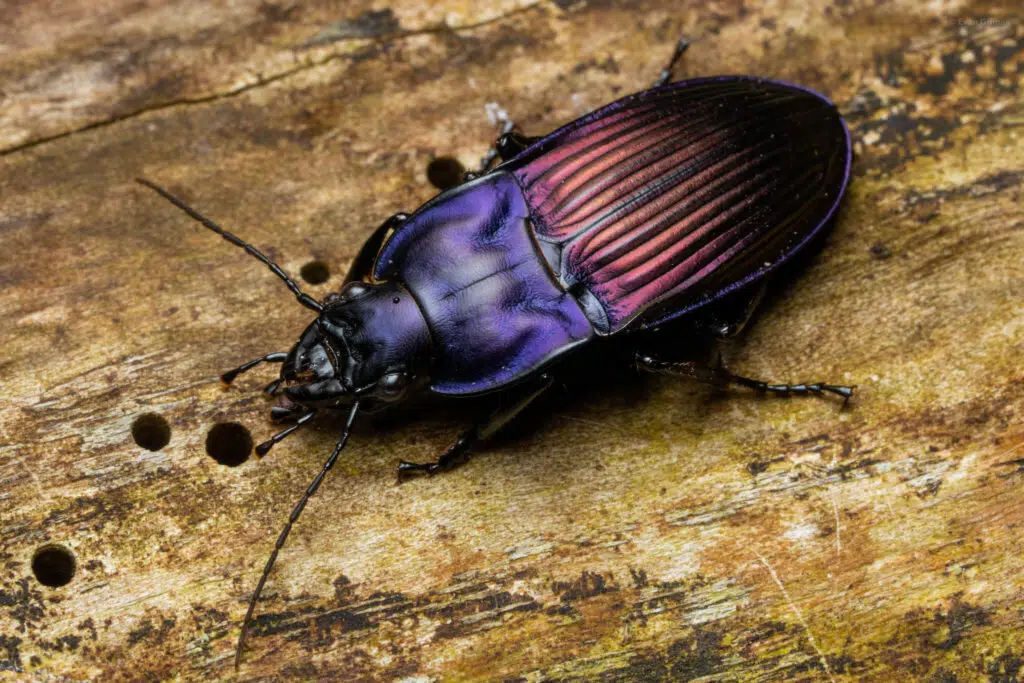
Found across North America, the Notch-mouthed Ground Beetle is seen across woodlands, moving along the ground seeking snails.
It eats snails with its large jaws and it represents one of the species of beetles with a different color hue depending on how light falls on its body.
This species can appear blue or purple, depending on light conditions. Its legs, head, and antennae are black.
Beetles of this genus aren’t seen during the day. They hide under leaf litter or rocks.
2. Nuttall’s Blister Beetle
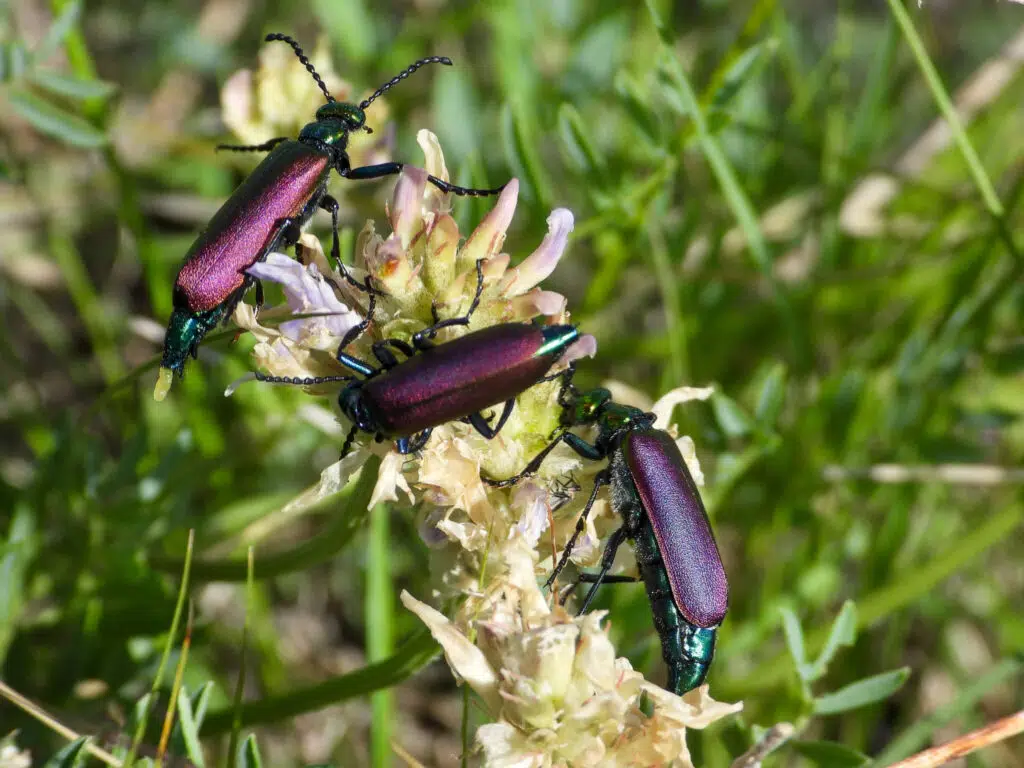
This purple species (Lytta nuttalli) is native to North and Central America.
As a diurnal species, it lives in full sun and it prefers meadows, crops, and gardens.
Feeding on legumes, Nuttall’s Blister Beetle is one of the purple-green species that contrast the natural green vegetation they live on, immediately standing out.
While they’re easy to spot, these beetles aren’t good food for predators as they have a bad taste through the toxins they ingest daily.
The species is sometimes confused with similarly-colored flying insects such as wasps.
3. Green Dock Beetle
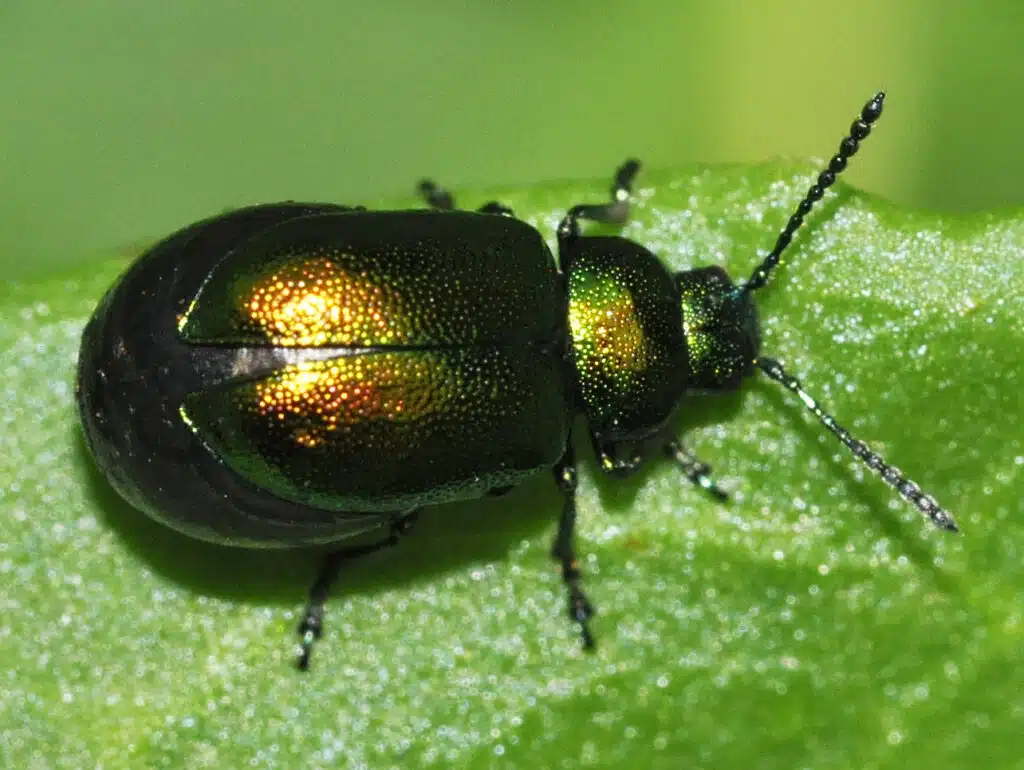
Green Dock Beetles (Gastrophysa viridula) are herbivorous species that are seen up until October.
These types of beetles start live as black larvae. They then turn into colorful adults which may be purple, green, or yellow.
Their color depends on the light conditions with purple being their color on cloudy days.
Green Dock Beetles are seen across Europe and North America.
Beetles of this genus are rather small compared to other purple bugs. They grow to a size of 3-4mm.
You can find them in woodlands but they can also be a common sight in gardens with green sorrel.
4. Purple Tiger Beetle
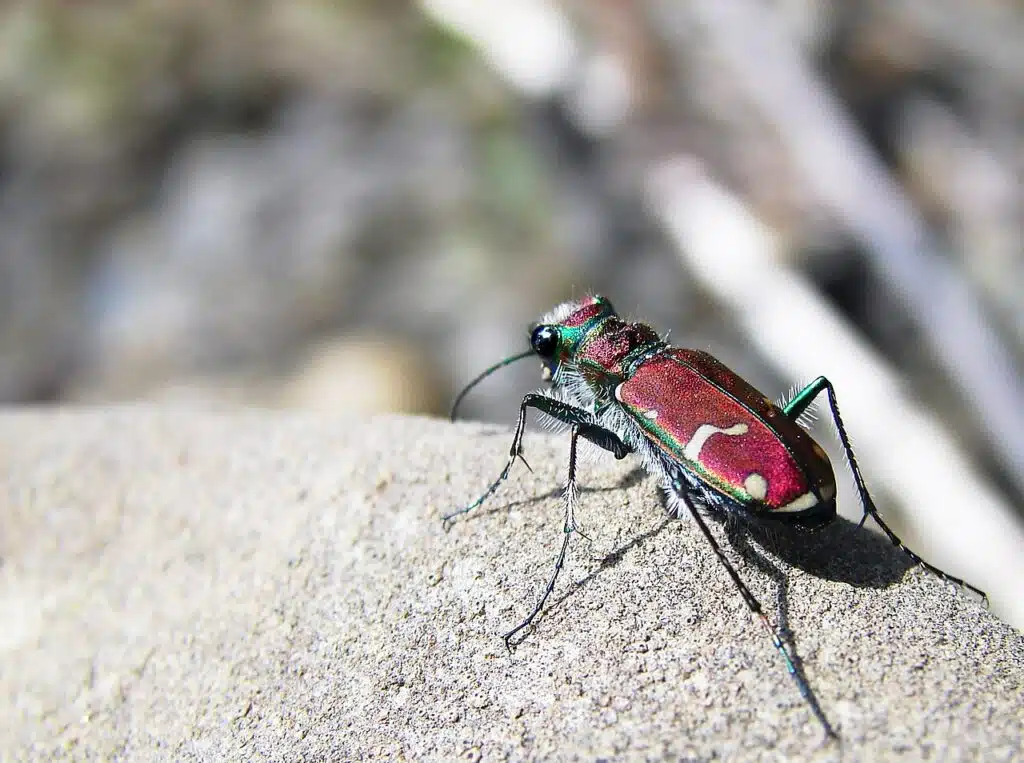
This type of beetle (Cicindela purpurea) is native to North America.
It lives in woodlands where it’s found in 2 main colors. The male has a purple color with green central areas across his body. It also has a purple head.
Females of the species are green, with a few bright yellow stripes along its body.
Purple Tiger Beetles live secretive lives. They are only found across paths and trails in woodlands.
They live in an extended habitat across Eastern, Southern, and Northern US woodlands.
5. Carolina Metallic Tiger Beetle
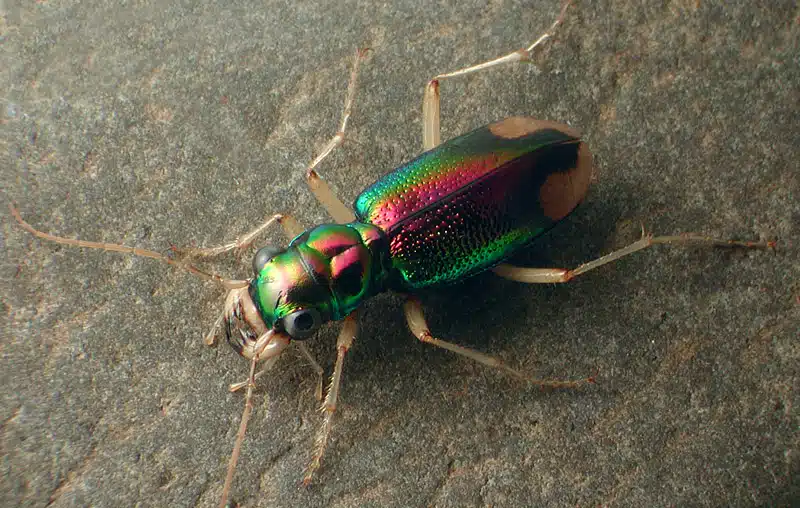
This long colorful beetle (Tetracha carolina) is native to Eastern and Southeastern US territories.
It has a metallic color with different hues, which include a considerable purple section.
Its mid-dorsum is always purple while the sides of its body are either matte green or metallic green.
A combination of green and purple colors is also characteristic of its head.
Carolina Metallic Tiger Beetles also have yellow legs.
They have yellow and brown mouthparts and pale yellow antennae.
6. Aspen Skeletonizer
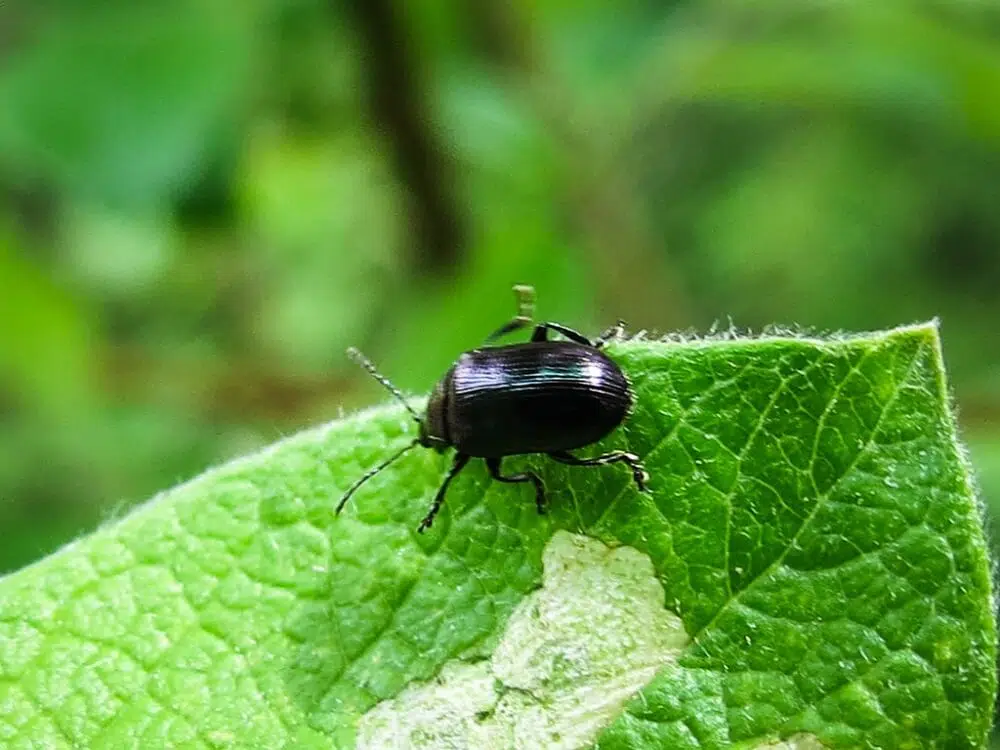
A purple-black color is specific to Aspen Skeletonizers (Phratora purpurea). These beetles bear the name of their aspen host and their eating habits that skeletonize their leaves.
This beetle has a deep purple color all across its head, body, and legs.
Adults of the species emerge in late spring. They only lay eggs in the second half of June.
A common sight in Northeastern US territories, this bug is only seen until the last days of summer.
It may alternatively be seen on other tree hosts. Willows are among the secondary hosts of the species.
Copper-color Aspen Skeletonizer beetles may also be seen on poplars.
7. Chlorocala Africana
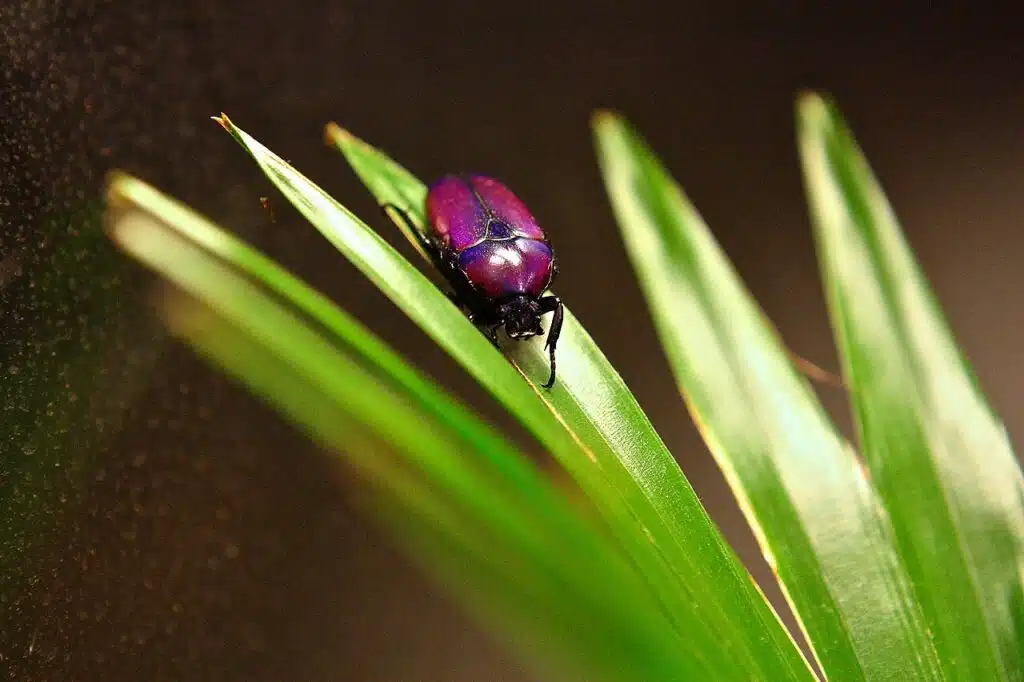
This type of African beetle is found in various nuances. A green and purple nuance is common among members of the species.
All-purple coloring is also specific to this species in a rare morph.
Beetles of this genus grow to a maximum size of 0.9 inches.
Native to Africa, they are native to countries such as Ghana and Togo.
8. Rosemary Beetle
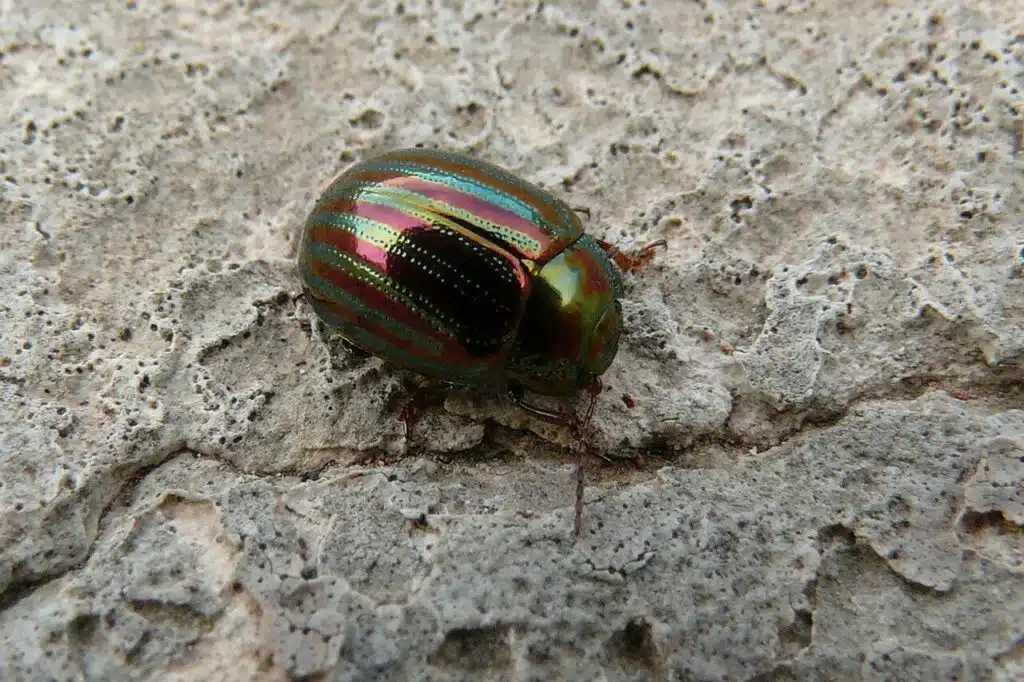
Rosemary beetles (Chrysolina americana) have green coloring with purple stripes across the elytra.
The color of these beetles is impacted by the color of their host plants. They can be seen feeding on lavender, rosemary, or thyme.
Rosemary beetles are native to Southern Europe with expanded habitats in Northern Europe and an introduced status in North America.
Seeing these bugs in the garden may not be a major reason to worry as they tend to be eaten by their natural predators.
Larger Rosemary Beetle invasions that last are reasons to consider insecticide use as these bugs can kill their host plants when present in high numbers.
9. Spintherophyta violaceipennis
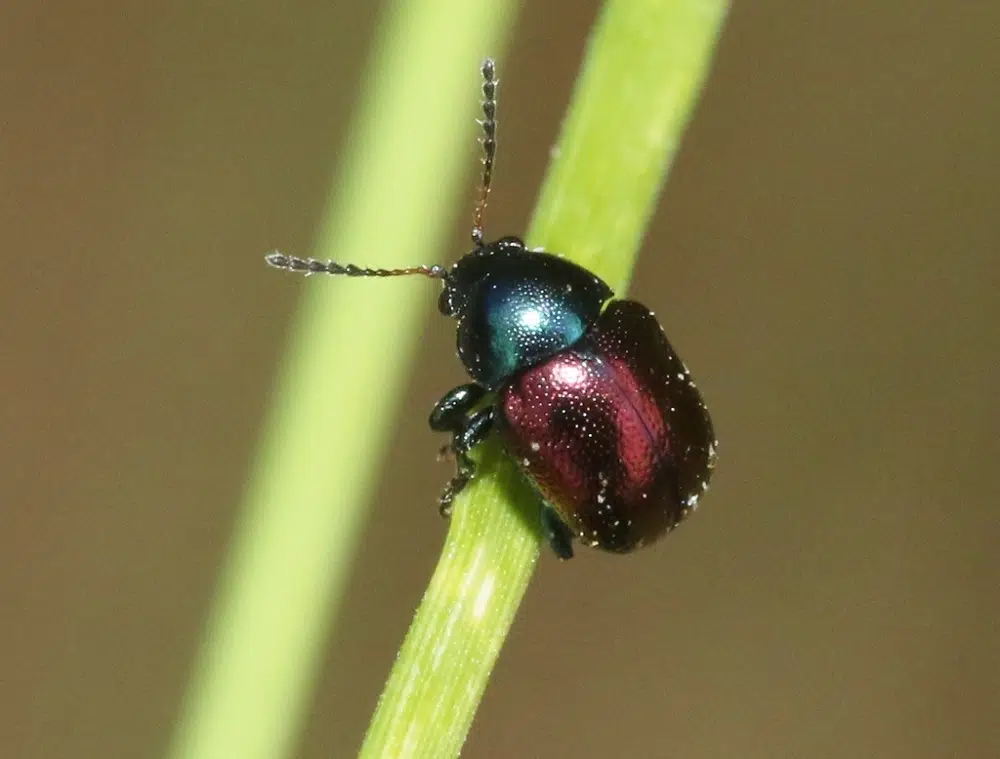
California and Arizona are US territories where these beetles are native. They are also found all around Mexico.
It has a black head and red to purple elytra coloring.
Beetles of the species have glossy elytra, similar to ladybugs.
It feeds on the leaves of various species, including willows.
Also found at high elevations, these colorful beetles are also seen on other hosts such as pine trees.
10. Japanese Earth-boring Dung Beetle
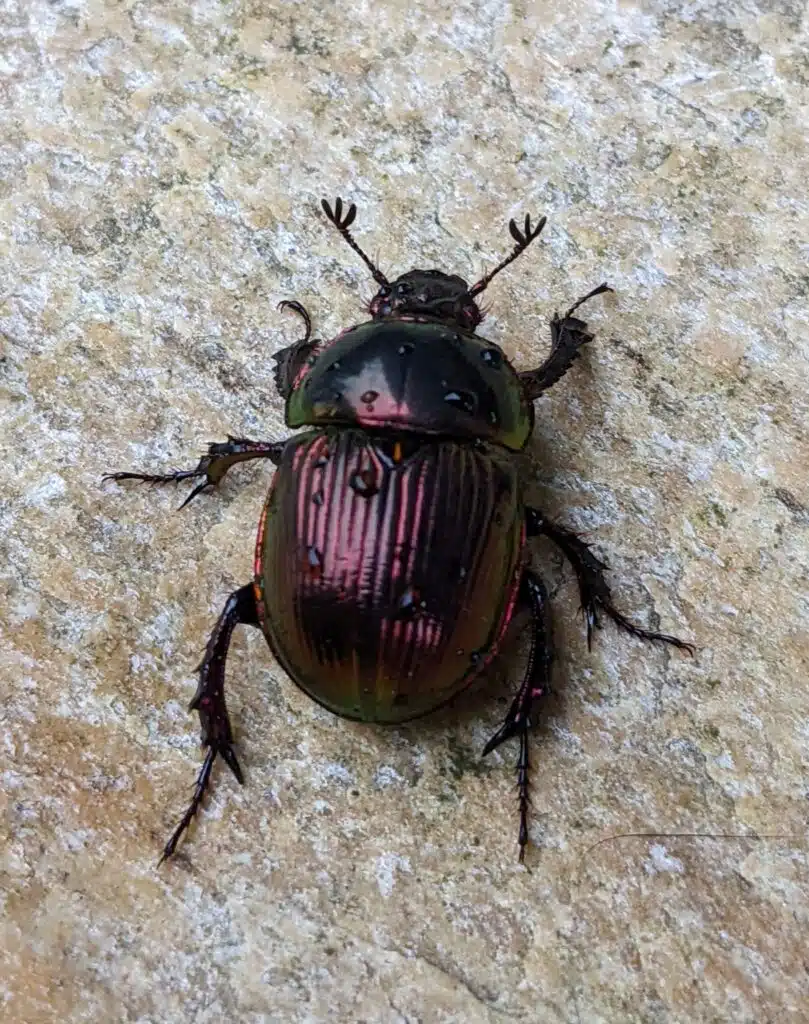
Japanese Earth-boring Dung Beetles (Phelotrupes auratus) have a similar violet-purple coloring to Spintherophyta violaceipennis.
Native to Japan, China, and other regions of Asia, the Japanese Earth-boring Dung Beetle has purple elytra coloring.
Its prothorax is black while its legs are both black and purple.
Known for its round-shaped body, this species also shows deep grooves across the elytra.
Japanese Earth-boring Dung Beetles have varying sizes with a maximum length of 21mm.
11. Pseudaplemonus limonii
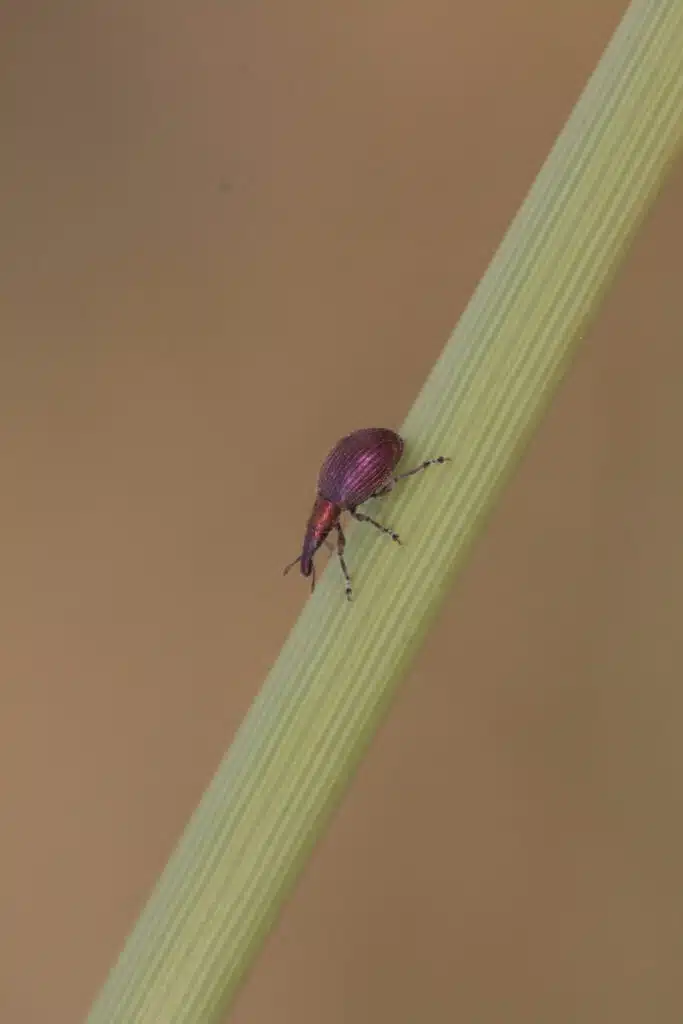
This is one of the smallest purple beetles in the world. It may be as small as 2.8mm as an adult.
Beetles of this genus are native to Europe and Africa.
They are identified by a purple body and an elongated snout. The purple body of the species shows deep grooves.
Mediterranean sea lavender is the host plant of the species. The habitats where the plant grows are the habitats where the beetle is found in its highest numbers.
This includes Southern and Southwestern Europe as well as Northwestern Africa.
To a lesser extent, the species is also seen on other purple host plants.
12. Zorion guttigerum
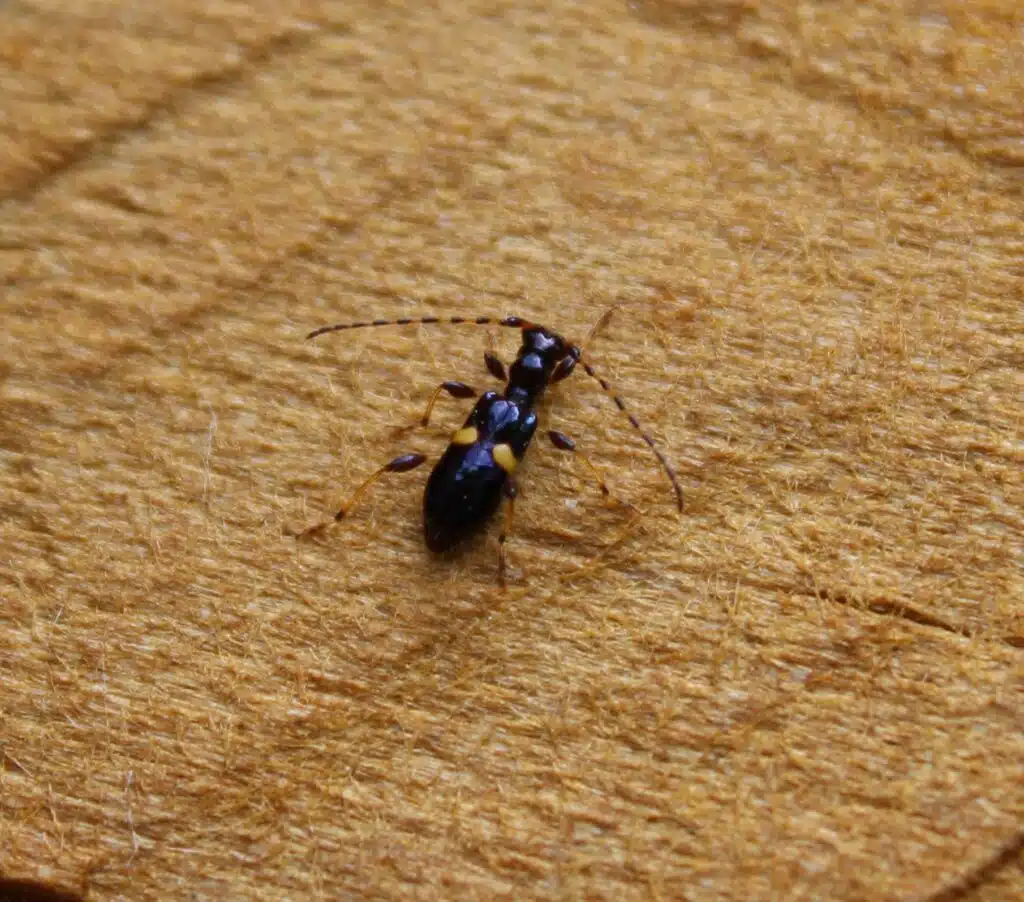
This species of purple beetle is native to New Zealand.
Body coloring makes this species stand out more than other native species.
Its purple color is seen across its body and head. 2 yellow spots contrast its body.
Beetles of this genus are also known for having very long antennae which have the same length as the body.
Various violet flowers are the main host of the species. Purple toadflax is among the most common hosts of beetles.
Other white and yellow flowers might also host the larvae of Zorion guttigerum
13. Common Claybank Tiger Beetle
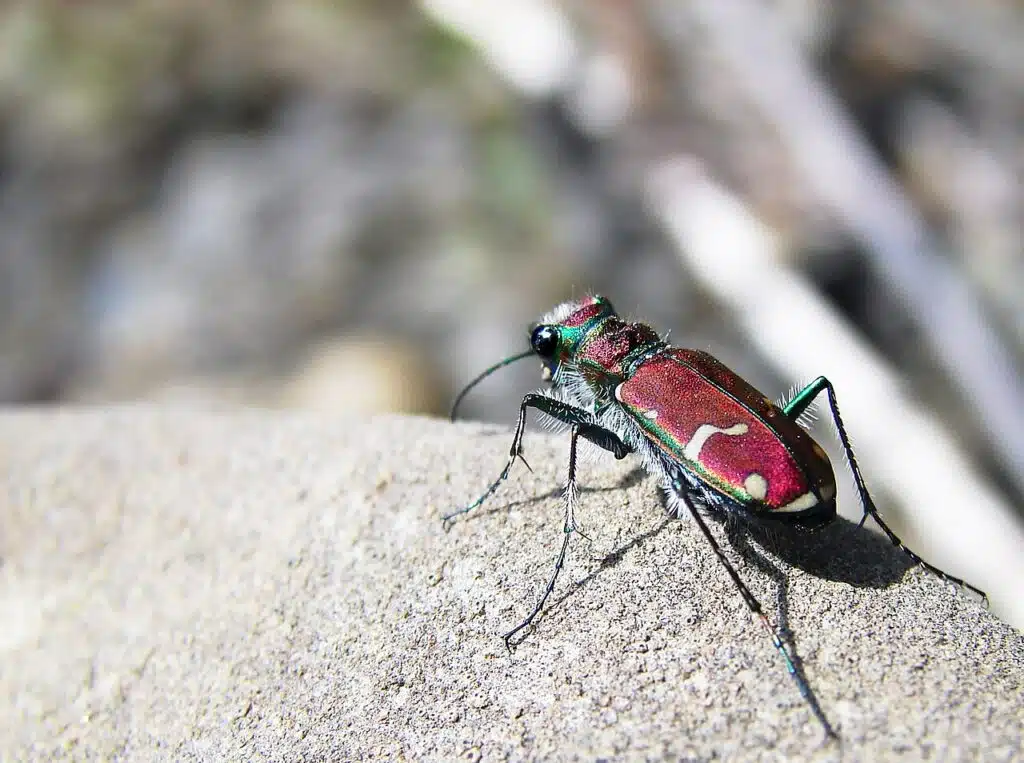
Common Claybank Tiger Beetles (Cicindela limbalis) are native to North America.
These beetles are considered an endangered species throughout most states it can be found in.
You can see these beetles in the Yukon region but in very reduced populations. It’s also present in the area of The Great Lakes, also in diminishing numbers.
Spotting a Common Claybank Tiger Beetle isn’t difficult as this species is mostly visible on bare soil net to water sources.
It has a purple body color with metallic green sides. It has a purple and green head. Its legs are black and covered in scarce short white hairs.
The species is one of the purple beetles with long lives as it can survive up to a few years.
14. Chrysochares asiaticus
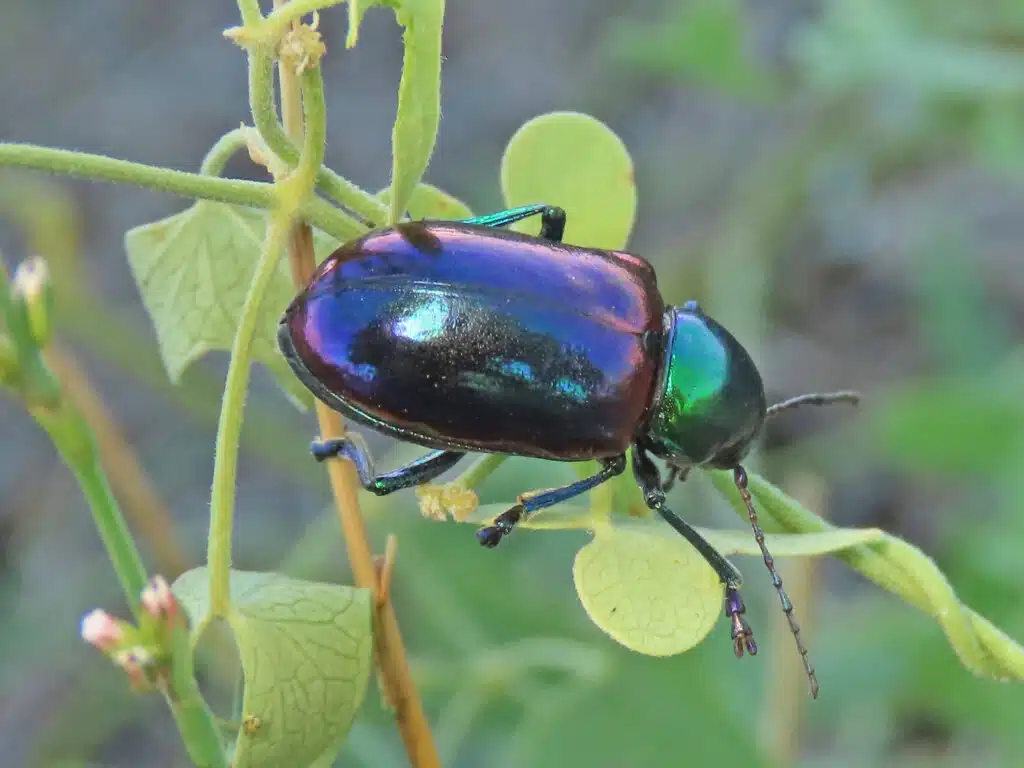
This species of beetle is native to Asia. It has blue and orange coloring or blue-green and purple coloring, depending on its gender.
Females have more purple coloring compared to males.
You can also identify females by their long purple antennae.
A medium-sized body is specific to this species. Some females of the species grow up to a size of o.7 inches.
The highest populations of Chrysochares asiaticus are found in Russia and China.
15. Brassy Willow Beetle
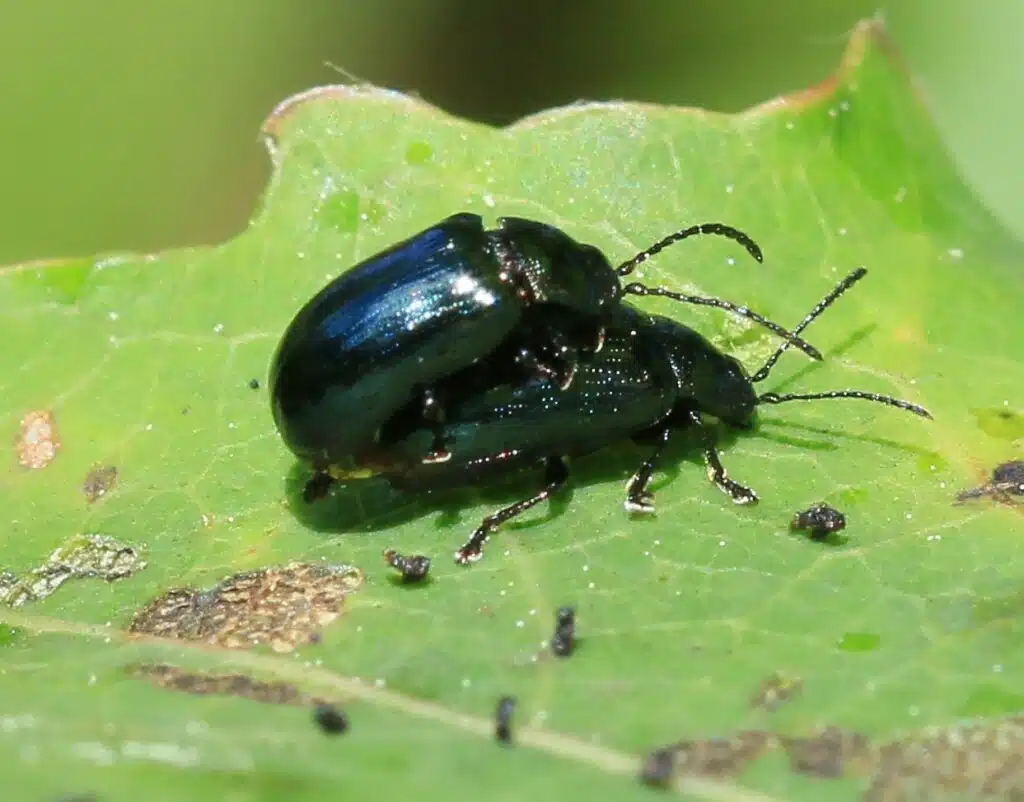
This species of beetle (Phratora vitellinae) comes in a purple or gold color. Its populations across high elevations and those in the Arctic regions are known to be purple.
Some theories suggest the species is purple as it uses purple willow as one of its hosts.
However, the beetle is also found on poplar.
The species can be detrimental in its larval stage. Its larvae grow in groups negatively impacting its hosts.
Brassy Willow Beetle larvae are known to have toxic secretions which keep predators away.
16. Steel-blue Grapevine Flea Beetle
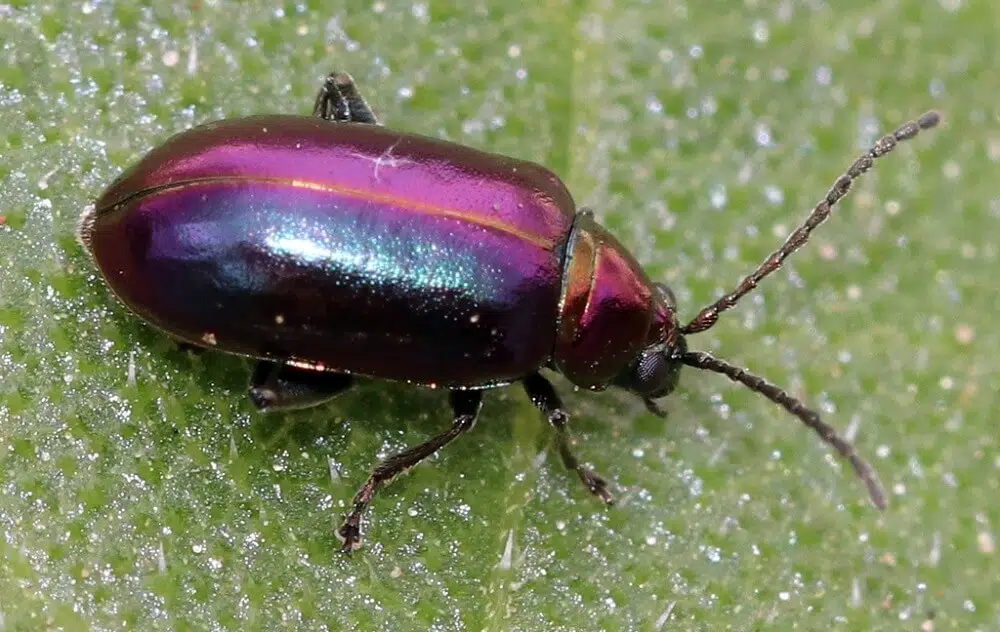
This flea beetle (Altica torquata) is native to North and Central America.
Steel-blue Grapevine Flea Beetles bear the color of the grapevines they grow on.
Most of the body is covered in purple coloring. The edges show metallic green nuances.
Steel-blue Grapevine Flea Beetles have long purple antennae.
Part of the Chrysomelidae family, this species is part of a wide group of thousands of leaf-eating beetles.